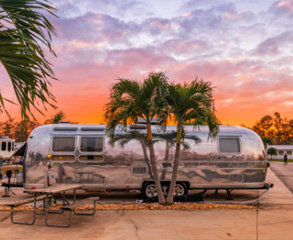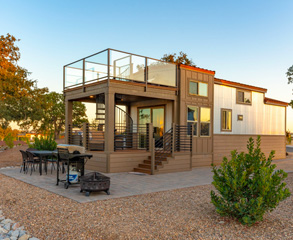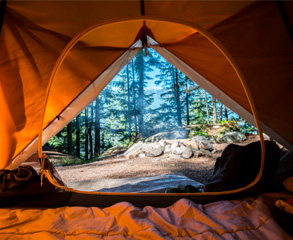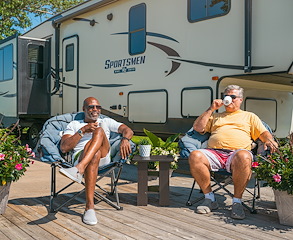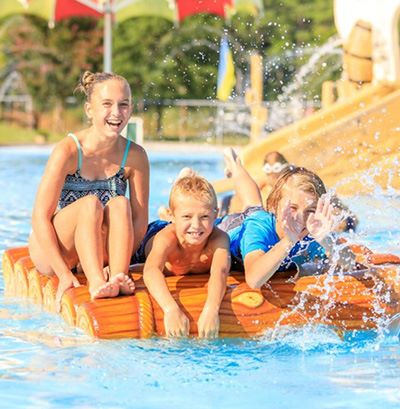Your Guide to Buying a Tent
Buying a tent can be an intimidating process. The use and amount of industry jargon can also make tent shopping confusing, especially for newcomers. But never fear! We're here to offer helpful tips and terms to help you navigate the world of tents.
In this post, we're serving up a guide to common considerations that arise when buying a tent. With these tips, you can be confident in your tent of choice, knowing that you've purchased the best product for your needs. Keep reading for our recommendations on what to know when picking a tent!
Choosing the Best Size
First things first, you need to select the size of tent you need. As a rule, you should choose a tent size that is 1-2 persons larger than the number that will be sleeping in the tent. This ensures that you have room for your bags.
Additionally, you should account for the space of an extra "person" if you are bringing a dog. Fido needs a place to rest too!
Seasonality Options
The next step is to determine the seasonality of your tent. There are three common types of tent seasonality that you'll encounter when buying a tent:
3-Season Tents
Lightweight tents designed for mild weather in late spring, summer, and early fall. Great for airflow, but not suitable for high winds, snow, or cold temperatures.
3-4-Season Tents
Sometimes called 3+ season tents, these can be used during summer, but offer more durability for cooler spring and fall weather. Extended season tents can handle light snow.
4-Season Tents
Rugged and durable, 4-season tents feature sturdy poles and heavy fabric to withstand high winds, heavy snow, and cold temperatures. These shelters are often too warm for summer camping.
Different Tent Types
As you're buying a tent, you'll find numerous types of tents being advertised. But what do these types mean?Pop-up
Pop-up tents are the simplest tents to set up. With just a couple of steps, these tents open on their own and take shape. While convenient, pop-up tents are small, offer limited durability, and can be expensive.Dome
Dome tents have a unique shape with a high center, sloped walls, and a web of poles. This design provides added strength to withstand gusty winds, but the curved shape limits headroom along the tent walls. Nevertheless, dome tents offer good versatility and value.Cabin
If you're camping with the family, a cabin-style tent could work well. These accommodations feature near-vertical walls for added headroom. Cabin tents also frequently feature room dividers and screen "porches" for separation of spaces.Ridge
The traditional style is the ridge tent, sometimes called an A-frame tent. This design has two poles at each end to form a triangular tent. While ridge tents are easy to assemble, they feature limited space due to the slanted walls.Tunnel
Named for their tubular shape, tunnel tents have rows of curved poles creating a long, tunnel-like shelter. These offer more space than dome tents and are better for big groups. That said, tunnel tents take time to assemble and require large, flat campsites.Vis-à-vis
Originating in France, vis-à-vis tents are great for family camping trips. They feature two sleeping sections on either side, with a living area in the center. The separate compartments offer privacy, but vis-à-vis tents tend to be heavy and are more difficult to set up.
Features of a Tent
We've covered the main aspects of buying a tent in the previous sections. But there are many minor features that will also influence your decision.
Tent Poles
Tent poles are a balancing act. Fewer poles make the tent lighter and easier to set up, but more poles increase the sturdiness. Consider these priorities and remember that aluminum poles will offer greater strength than fiberglass poles.
Height
The height of a tent is often called peak height in the camping industry. This refers to the maximum height at the tent's highest point, usually in the center. Tall individuals and those who prefer an airy tent should look for a tent with a tall peak height.
Floor Length
Another consideration for tall people is the floor length. Those over six feet tall will want a tent with a floor length of at least 90 inches.
Doors
Think about the number and style of doors you want in your tent. Multiple doors can be helpful for family camping, particularly in cabin or vis-à-vis tents. Also check whether the doors feature interior mesh screens for maximizing airflow while keeping bugs out.
Rainproofing
You'd be wise to invest in a tent with good rainproofing. Look for a tent with waterproof fabric and a full-coverage rainfly for maximum protection. If you're camping in a dry climate, such as the American Southwest, a roof-only rainfly may be suitable.
Ventilation
Mesh panels allow airflow inside a tent. Seek out a tent with large mesh panels if you'll be camping in hot, humid environments.
Tent Materials
Denier, pronounced den-YAY, describes the thickness of yarn. Higher-denier fabrics offer greater durability than lower-denier fabrics. So, if you want a durable tent, it should have a denier of 150 or higher.
There are more considerations when buying a tent, but these are the main features to focus on. Now when you're shopping for your camping shelter, you can feel confident that you're purchasing the best product for your needs.
Have a friend who's looking for a tent? Lend them a helping hand by sharing this post!
Related Posts
